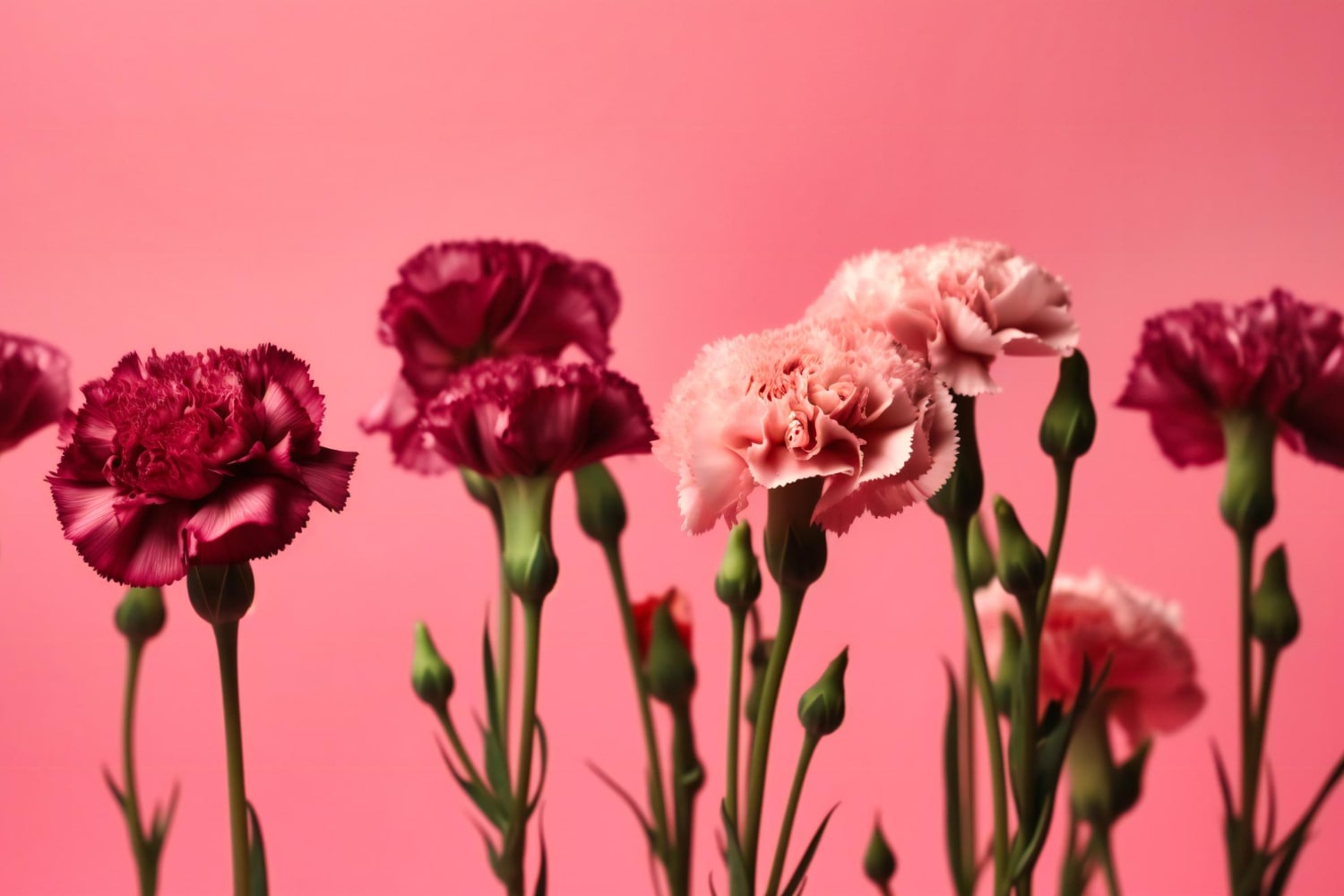Carnations are among the most recognizable and beloved flowers in the world, admired for their delicate beauty and rich symbolism. Their lace-like petals have long been associated with love, devotion, and tenderness. Yet behind this familiar charm lies a wealth of interesting and fascinating facts you may not know. These captivating facts reveal the carnation’s long journey from ancient times to modern science. After reading them, you will surely see this flower in a whole new light.
- Carnations are considered one of the oldest cultivated flowers known to humankind. Archaeological findings show that they were grown more than two thousand years ago in ancient Greece and Rome. They were called the “divine flower” because they decorated sacred festivals and the altars of the gods.
- The name “carnation” comes from the Greek word meaning “flower of Zeus.” The ancient Greeks believed this fragrant blossom was created by Zeus himself as a symbol of beauty and nobility. In Latin, it was given the name Dianthus, which translates to “divine flower.”
- There are over 300 species of carnations growing across different parts of the world. The most popular one is the garden carnation, often used in floral arrangements and bouquets. Wild species can be found in the Mediterranean region, Central Asia, and even in the mountain areas of Europe.
- Carnations are not only red or pink, as many people think. Breeders have created hundreds of shades — from pure white to purple, green, and even two-toned varieties. Some modern cultivars have unique color gradients that make them true natural wonders.
- These flowers have a remarkable ability to stay fresh for a long time after being cut. This is why carnations are among the most popular choices for bouquets, lasting up to two weeks in water. Their petals remain firm, and their pleasant scent lingers beautifully.
- In different cultures, carnations carry distinct symbolic meanings. In China, they represent family happiness and harmony. In Europe, the red carnation symbolizes love and courage, while the white one stands for purity and sincerity of feelings.
- During the French Revolution, aristocrats wore red carnations on their way to execution as a sign of dignity and calm in the face of death. The flower became a symbol of bravery and defiance.
- In the 20th century, the red carnation became an emblem of the socialist movement and Labor Day. In many countries, it was given on May 1st as a sign of solidarity and unity among workers. Over time, its political meaning faded, leaving only its aesthetic value.
- Carnations have a slightly spicy fragrance thanks to the essential oils contained in their petals. This aroma sets them apart from many other decorative flowers and has made them popular in perfumery. In old perfume recipes, carnations were often combined with roses and lavender.
- These flowers also play a role in medicine. In traditional remedies, they were used to reduce fever and ease pain. Modern studies confirm that carnations contain antioxidants and compounds with anti-inflammatory properties.
- Carnations can be grown not only in gardens but also indoors. They love sunlight and moderate watering and adapt well to room conditions. When they bloom, they fill the home with a gentle and refreshing natural fragrance.
- In Japan, the carnation is a symbol of courage and loyalty. It is often given to men as a sign of respect or gratitude. In traditional Japanese ikebana arrangements, carnations are used to express balance and harmony.
- Carnation petals are sometimes used in cooking to flavor drinks and desserts. They can be added to fruit salads, jams, or tea to give a subtle fragrance. In some countries, the petals are candied and used as decorations for festive dishes.
- Botanically, the carnation belongs to the Caryophyllaceae family, which also includes plants such as campion and catchfly. All members of this family share narrow leaves and five-petaled flowers. The carnation, however, remains the most popular and admired representative.
- Carnations can thrive even in dry conditions. Their deep root system allows them to access moisture from deeper soil layers. This makes them a resilient plant well-suited for warm and arid climates.
- Around the world, there are festivals dedicated to carnations. One of the most famous is held in the Portuguese city of Braga, where the streets are adorned with thousands of blooms. The celebration features parades, floral exhibitions, and outdoor performances.
- According to old legends, carnations appeared from the tears of the Virgin Mary as she wept over the crucifixion of Jesus. For this reason, the white carnation in Christian tradition symbolizes motherly love and purity. This motif often appears in religious art.
- Interestingly, the flower carnation has nothing to do with the spice of the same name. The spice known as clove comes from the dried buds of the clove tree, a tropical plant. The true carnation is an herbaceous flower cultivated in temperate climates.
- The carnation is the official state flower of Ohio in the United States. It was chosen for its beauty and historical importance to the region. The flower is also seen as a symbol of love, strength, and perseverance — qualities admired by the people of the state.
- In modern floristry, carnations are frequently used in wedding bouquets. They pair beautifully with roses, peonies, and chrysanthemums. Thanks to their durability and volume, carnations add elegance and fullness to floral arrangements.
The carnation is not just a beautiful flower but also a symbol of endurance, tenderness, and grace. These remarkable facts reveal its rich history and cultural significance. From ancient myths to modern bouquets, the carnation continues to inspire and fascinate people around the world. After learning these interesting facts, it is impossible not to admire this extraordinary flower.





